 April 30, 2015 John E. Ross, KD8IDJ, Editor
| |||||||||
FCC Proposes to Permit Amateur Access to 2200 and 630 Meters Amateur Radio is poised to gain access to two new bands! The FCC has allocated a new LF band, 135.7 to 137.8 kHz, to the Amateur Service on a secondary basis. Allocation of the 2.1 kHz segment, known as 2200 meters, was in accordance with the Final Acts of the 2007 World Radiocommunication Conference (WRC-07). The The allocation changes, associated proposed rules, and suggested topics for comment are contained in a 257-page FCC Report and Order, Order, and Notice of Proposed Rulemaking addressing three dockets -- ET-12-338, ET-15-99, and IB-06-123 -- which affect various radio services in addition to the Amateur Service. The FCC released the document on April 27. With respect to the new LF sliver band at 135.7-137.8 kHz, the FCC concluded that Amateur Radio and PLC systems can coexist there. "Since the Commission last considered this issue, amateurs have successfully operated in the band under experimental licenses without reported PLC interference," the FCC said. In 2003, the FCC turned down an ARRL proposal to create a 135.7-137.8 kHz Amateur Radio allocation, after utilities raised fears of a clash between Amateur Radio and PLC systems operating below the AM broadcast band. This time, the FCC said, "It is clear that we will have to establish appropriate requirements for amateur use of the band, if we are to ensure compatibility with PLC systems." WRC-07 set a maximum effective isotropic radiated power (EIRP) limit of 1 W, which is what the FCC is proposing. The FCC said it "explicitly" rejects the suggestion that it choose one use of the spectrum over the other. "Our objective is to allocate spectrum on a secondary basis to amateur stations in a manner...compatible with existing PLC systems," the FCC said. "However, we also expect to permit amateur operators to make use of the allocation in a manner that is less burdensome and more productive than they are currently afforded under the experimental authorization process." The Commission said that if it concludes, after considering the record, that Amateur Radio and PLC systems cannot coexist, it would "defer the adoption of service rules, and amateur users will have to continue to use the experimental licensing process to operate in the band." With respect to the proposed 630 meter allocation, the FCC has proposed limiting amateur stations in the US to a maximum 5 W EIRP. The ARRL submitted a Petition for Rule Making in 2012, asking the FCC to allocate 472-479 kHz to the Amateur Service on a secondary basis and to amend the Part 97 rules to provide for its use. Several countries, including Canada, already have access to the band. The ARRL has pointed out that during its extensive course of experimentation in the spectrum around 500 kHz, no interference reports have been received.
The FCC said that the "cornerstone" of the technical rules it's proposing for both bands is "physical separation between amateur stations and the transmission lines" carrying PLC signals. "Such a separation, in conjunction with limits on the amateur stations' transmitted EIRP and antenna heights, will enable PLC systems and amateur stations to coexist in these bands," the FCC asserted. "In addition, we propose to limit amateur stations to operations at fixed locations only, to ensure that this separation distance can be maintained reliably." The FCC said it wants to hear from both PLC system users and radio amateurs regarding technical requirements it would have to put into place to permit both users to operate comfortably and without compromising the PLC systems. The Commission suggested that other requirements might include limits on antenna heights, transmitter power limits, and operating privilege limits based on license class or mode. The ARRL will file comments in the proceeding. The FCC will accept comments for 60 days following publication of the Report and Order, Order, and Notice of Proposed Rule Making in the Federal Register. Reply comments would be due 30 days after the comment deadline. Nepal Grants Operating Permission, Call Signs to Visiting Hams, as Earthquake Recovery Continues In the wake of the devastating April 25 earthquake, hams in Nepal, already in limited supply, have been turning out to help in the ongoing recovery. The Nepalese government also is reported to be cutting some of the red tape that has prevented hams from outside the country from operating within Nepal. Several hams from India are "ARRL is working closely with amateurs in Nepal to identify equipment needed for the relief effort," said ARRL Emergency Preparedness Manager Mike Corey, KI1U. "We are preparing a shipment from the Ham Aid inventory, but like other NGOs, we are facing transportation challenges. We hope to have transportation arrangements in place soon." Unconfirmed reports said another group was having problems getting a repeater into Nepal. While parts of the telecommunication infrastructure remain in operation, power is out. Ham radio remains a reliable link at this stage of the recovery effort. A major focus of rescue teams has been attempting to locate the missing, as well as to recover quake victims buried beneath debris. More than 5000 people are now reported dead as a result of the earthquake and subsequent aftershocks. The disaster also has stranded many people, as roads were cut off by landslides and damage. Rain, heavy at times, has hampered rescue and recovery work. "In spite of the conditions, ham radio operation is in progress, and the Nepal government has started issuing licenses to visiting hams, with 9N7 prefixes," said Jayu Bhide, VU2JAU. Bhide, who is the Amateur Radio Society of India's National Coordinator for Disaster Communication, said these stations have been asked to help provide communication to more of the devastated region. Ham radio groups are being asked to spread out in terms of operating frequencies as well. Bhide said a lot of the Amateur Radio traffic has consisted of health-and-welfare inquiries. Mike Kalter, W8CI, told ARRL that he relayed an urgent request from the family of a woman traveling between Nepal and Tibet with a tour group. He passed along the information via ham radio to Mohan Suri, VU2MYH, in Nepal, who supplied the information to authorities. Within a few days, the woman being sought reported back through Jerry Long, KJ4YAP, that groups were going through the streets of Kathmandu, announcing names of individuals being sought, and she heard her name called out. The woman and her tour group were subsequently helicoptered out of Nepal.
At least two groups of hams from Gujarat, India, were planning to travel to Nepal and set up stations "at critical places," Bhide said, adding that he, Ananda Majumdar, VU2AGJ, and Sandip Baruah, VU2MUE, were planning to set up HF and VHF stations at Gorakhpur, on the India-Nepal border. Amateur Radio HF nets have been one link between Nepal and the outside world, as Internet service continues to be spotty. Nepalese hams also are active locally on VHF/UHF. Bhide said residents in the affected areas were finding it difficult to contact family members, as their cell phones have discharged, and no charging facility is available. He and some of the radio amateurs active on the relief and recovery nets contacted agencies in Nepal to provide small solar charging units. The earthquake -- said to be the worst in Nepal in 80 years -- hit an area between the capital city of Kathmandu and the city of Pokhara. ARRL Facebook Repost of Interview with Ham in Nepal Draws Huge Response The Weather Channel's "AMHQ" program today featured an interview with Kathmandu Amateur Radio operator Satish Kharel, 9N1AA. ARRL has reposted the interview on its Facebook page, with the permission ARRL Media and Public Relations Manager Sean Kutzko, KX9X, said the video had reached some 102,0000 Facebook users and counting and been shared more than 700 times in less than 6 hours. "We've never had such a positive response to a social media post" Kutzko said. "Sharing this video on your Facebook page is a golden opportunity to help spread awareness of Amateur Radio to the general public." Jacob Nunez-Kearny, KF7DSY, is 2015 Goldfarb Scholarship Recipient The ARRL Foundation Board of Directors has named Jacob Nunez-Kearny, KF7DSY, of Mesa, Arizona, as the recipient of the 2015 William R. Goldfarb Memorial Scholarship. A senior at Desert Ridge High School in Mesa, he plans to attend Purdue University in the fall and pursue a career in aerospace engineering. Based on qualifications, need, and other academic funding sources, the award can be $10,000 or greater. The Goldfarb Scholarship is awarded to an active Amateur Radio licensee who intends to pursue a bachelor's degree in a business-related, computer, medical, nursing, or engineering field.
"I am really happy and honored to have received this scholarship," Jacob told ARRL. "This scholarship means that I have the opportunity to attend college with the knowledge that the community of hams believes in me. I imagine that all hams, especially ones young enough to qualify for this scholarship, are incredibly resourceful and intelligent, and so to be chosen out among them for this scholarship is a great honor." Jacob expressed his gratitude to his grandfather, Steve Kearny, KW7N, for introducing him to Amateur Radio. "If it weren't for him I wouldn't have become a part of this great community and hobby," he said. On his scholarship application, he said that Amateur Radio has piqued his interest in STEM (science, technology, engineering, and mathematics). "Through Amateur Radio I was able to turn theoretical learning into physical results," he said. "The time I spent solving equations and making schematics turned into a contact with a person hundreds of miles away." In an effort to get a leg up on his career choice, Jacob has been involved in a senior year engineering design program, Project Lead the Way, and he e The William R. Goldfarb Memorial Scholarship is the result of a generous endowment from William Goldfarb, N2ITP (SK). Before his death in 1997, Goldfarb set up a scholarship endowment of close to $1 million in memory of his parents, Albert and Dorothy Goldfarb. It is awarded to one high school senior each year. Read more. House Committee Asks FCC for Documents Related to Proposed Field Office Closures The US House Committee on Energy and Commerce has given the Federal Communications Commission a May 7 deadline to produce documents related to FCC Enforcement Bureau proposals to close two-thirds of its field offices and eliminate nearly one-half of its staff of field agents. In an April 23 letter, Committee Chairman Fred Upton (R-MI) told FCC Chairman Tom Wheeler that his panel wants the Commission to provide all documents relating to the proposed closures.
The field office and personnel layoff proposals were outlined in a March 10 internal memorandum from Enforcement Bureau Chief Travis LeBlanc and FCC Managing Director Jon Wilkins to EB field staff. The memo, obtained by ARRL and others, cited the need to take "a fresh look" at the Bureau's 20-year-old operating model in light of technology changes and tighter budgets.
During March hearings of the Subcommittee on Communications and Technology -- chaired by Rep Greg Walden, W7EQI (R-OR) -- on the FCC's FY 2015 budget request, Committee members sought more information from Wilkins and Wheeler on the basis of the proposals to close field offices. Upton said that his Committee has, to date, received just the two-page March 10 memorandum and a 35-page PowerPoint presentation that purports to outline the consultants' report. ARRL leadership met with Enforcement Bureau staff and with Capitol Hill lawmakers in March to express its own concerns about the proposals in light of seemingly lax enforcement of the Amateur Service rules. ARRL CEO David Sumner, K1ZZ, also addressed the FCC's field office closure proposals in his "It Seems to Us" editorial in the May 2015 issue of QST. "Given everything that's on [the Enforcement Bureau's] plate -- of which Amateur Radio is just a small part -- reducing the number of field agents from 63 to 33 and the number of field offices from 24 to 8 hardly sounds like progress," Sumner wrote. Read more. Boston Marathon Amateur Radio Support Adjusts to a "New Normal" More than 250 Amateur Radio communication volunteers participated on Patriots Day (April 20) in the 119th running of the Boston Marathon, sponsored by the Boston Athletic Association (BAA). This event was the second since the bombings that tragically marred the 2013 race. Amateur Radio volunteers have supported Boston Marathon "Development of detailed communications plans for each race segment was at the heart of the Committee's work," the Amateur Radio team said. "We expect this arrangement to continue, along with an increasing emphasis upon further training and standards, all intended to enhance the work of Amateur Radio public service, and to raise confidence in our capabilities to integrate with other organizations as effective team players." Cool, damp weather made the volunteers' role more difficult, but carrying out communication tasks according to the 2015 plan went smoothly. "Many Boston Marathon race officials favorably commented on the advancement in communications provided by Amateur Radio and other entities both in the planning stage and on event day," the Amateur Radio team said. "Through all the meetings, conference calls, and documents produced, I would say we all fulfilled what we set out to accomplish and more," said Chris Troyanos, Medical Coordinator for the Boston Marathon. "From the public safety side to all involved with the BAA, our communications program set new heights of excellence." Organizers from the Red Cross also expressed satisfaction with 2015 Boston Marathon communications.
Event logistics were coordinated more tightly. Added to Amateur Radio's tasks this year was reporting of hourly medical statistics from each of the 26 medical field units, and a new medical re-supply system, both relying on Amateur Radio communication. The cooler weather meant fewer heat-related medical emergencies, but from mile 12 onward, many runners suffered chills and had to stop at medical stations to warm up before moving on. Efforts were organized in segments that included start, course, transportation, and finish. A back-up medical dispatch communication plan, included in the public safety matrix, was among the many operational plans in place. Amateur Radio volunteers shadowed key race officials at the start and finish line, augmenting commercial radio services. They also staffed medical and hydration stations along the course; vans that travelled the course transported runners unable to complete the race to the finish line. Read more. -- Thanks to Rob Macedo, KD1CY, Mark Richards, K1MGY, and the Boston Marathon Amateur Radio team AMSAT: Amateur Radio Payload Could Share Space on Geosynchronous Satellite There is big news on the Amateur Radio satellite front. AMSAT-NA has announced that, if all goes according to plan, an Amateur Radio payload will go into space on a geosynchronous satellite that's planned for launch in 2017. As opposed to the more typical low Earth orbit, a geosynchronous orbit would permit an Earthbound ham at a given point within the satellite's footprint to access the satellite at approximately the "It is an ambitious schedule, and all involved will have to gain and maintain a serious level of commitment," said McGwier, the Director of Research at Virginia Tech's Hume Center for National Security and Technology. The AMSAT announcement on April 25 followed an April 13 meeting at MSS to discuss the project. According to AMSAT, the transponder is expected to support a wide range of voice, digital, and experimental advanced communications technologies. A decision is expected soon regarding the specification of the microwave uplink and downlink bands. The AMSAT Board of Directors has signed on to the project, and AMSAT expects to be involved in developing both the ground station and the RF payload. It will also serve as the Amateur Radio payload operator, once the satellite has been launched. Read more. -- Thanks to AMSAT News Service via Bob McGwier, N4HY, and others Dayton Hamvention® Youth Forum to Offer Chance to Meet Astronaut Young radio amateurs attending the Youth Forum at Dayton Hamvention on May 16 will have a chance to meet NASA astronaut and ham Mike Fincke, KE5AIT -- one of the more "radio-active" International Space Station crew members during his time in space. The Saturday morning
Youth Forum, organized by Carole Perry, WB2MGP, will include a variety of presentations from eight young hams, whom Perry called "role models for other radio amateurs and prospective young hams -- each sharing inspiring stories, having fun, and being creative in ham radio activities." One of the door prizes for young hams attending the forum will be a drawing for an ARRL-hosted luncheon with Astronaut Mike Fincke, KE5AIT. Fincke operated the Amateur Radio equipment on the International Space Station while he was part of the Expedition 9 and 18 crews. "Eight lucky students in elementary school, high school, or enrolled as a college undergraduate may participate in the drawing for lunch with the astronaut," said ARRL Educational Services Manager Debra Johnson, K1DMJ. "These students must already have their Amateur Radio license. What better way to inspire our youth to pursue more education and career paths in the STEM fields of science, technology, engineering, and math than by engaging with an astronaut-ham!" Fincke will talk with the students about his career, space travel, and research on the ISS. The luncheon will immediately follow the Youth Forum Saturday morning. Youth Forum presenters will include:
Perry has moderated the Youth Forum and instructor's workshops at Hamvention® for many years. She is a popular keynote speaker and seminar leader at numerous teacher and radio conventions across the country. Read more. New Section Manager Appointed in North Texas The ARRL North Texas Section will soon have a new Section Manager. Nancy McCain, K5NLM, of Fort Worth, will take over the
position on May 1, succeeding incumbent SM Chris Brewer, N5GMJ, who resigned due to increased work and family commitments. ARRL Field Services and Radiosport Manager Dave Patton, NN1N, made the appointment in consultation with Brewer, who recommended McCain for the post, and ARRL West Gulf Division Director Dr David Woolweaver, K5RAV. Brewer, of Saginaw, has served as the North Texas Section Manager since April 30, 2013. McCain, who is presently a North Texas Assistant Section Manager, has been active in ARES, RACES, and in Army and Navy MARS. She is a retired emergency management specialist. She will complete the current term of office as North Texas Section Manager, which runs until March 31, 2017. Armed Forces Day 2015 Crossband Communications Test to Offer New Modes The annual Armed Forces Day Crossband Communications Test set for Saturday and Sunday, May 9-10, will offer Amateur Radio operators a chance to try their hand at using more modern military The annual event is a unique opportunity to test two-way communication between Amateur Radio and military stations. It features the traditional military-to-amateur crossband SSB voice, CW, MT63, and AMTOR FEC, plus MIL-STD Serial PSK and ALE, both new this year. Those interested in trying the MIL-STD Serial PSK mode can download the free MS-DMT software. A complete list of participating military stations, operating modes, and times of operation is on the US Army MARS website, as well as on its Facebook page. Read more. The Sinking of the Lusitania: A Ham Radio Connection? Several Amateur Radio special event stations will be on the air in early May to commemorate the 100th anniversary of the sinking of the Cunard Line's RMS Lusitania -- at one time the world's largest ship -- off the coast of Ireland. As one of the events precipitating US entry into World War I, the sinking of the Lusitania by Germany on May 7, 1915, claimed some 1200 lives, although another 800 or so of those aboard survived.
GB100MFA will operate during the entire month of May from the UK, with members of the Radio Officers Association at the helm from the lightship Planet in Liverpool, Lusitania's home port and its ultimate destination on its voyage from New York. EI100MFA will be on the air from Ireland May 3-10. MFA was the ship's call sign. Other announced operations include KC9HYY/LUS100, operating May 1-9 from Wisconsin; N2L, operating May 1-15 by the Great South Bay Amateur Radio Club (GSBARC) from Long Island, New York, and WW1USA, operating May 9-10 from the National World War I Museum in Kansas City, Missouri, by the Santa Fe Trail Amateur Radio Club. According to wireless history accounts, it was a radio amateur, Charles Apgar, 2MN, of Westfield, New Jersey, who finally figured out the significance of the odd buzz-like transmissions he'd heard emanating evenings from German Telefunken station WSL in Sayville, Long Island. As recounted by the late Phil Petersen, W2DME, Apgar not only was curious, but suspicious. "Apgar had a very advanced sensitive Armstrong regenerative receiver that he modified to make off-the-air recordings on a cylinder recorder," Petersen wrote. "Suspecting that WSL was transmitting secret intelligence at very high speed, Apgar further modified his audio recorder to greatly reduce the speed on playback. As he suspected, the 'buzz' was actually secret Morse code sent at very high speed." Apgar turned his recordings of WSL's transmissions over to the US Secret Service, which seized the station in July 1915. WSL officials "were charged with sending illegal secret messages regarding allied and neutral shipping," Petersen recounted. "It was also believed that the German submarines obtained secret information that led to the sinking of the passenger ship Lusitania. After the government seized the station, sinkings by U-boats greatly decreased." Read more. The K7RA Solar Update Tad Cook, K7RA, Seattle, reports: There were no new sunspots over the April 23-29 reporting period, although the previous 7 days saw new sunspots every day -- and April 21 had two new ones. Solar flux and daily sunspot numbers declined. The average daily sunspot number dropped from 120.9 to 60.7, and average daily solar flux went from 150.4 to 119.8.
Predicted planetary A index is 10 on April 30 through May 1, 8 on May 2, 5 on May 3-11, 25 on May 12, 20 on May 13-14, then 12, 8, 12, 20, 12, and 8 on May 15-20, and 5 on May 21-25. Download my archive of these forecasts, updated daily, for flux values and Ap index (click the "Download this File" button; files are Excel spreadsheets). This weekly "Solar Update" in The ARRL Letter is a preview of the "Propagation Bulletin" issued each Friday. The latest bulletin and an archive of past propagation bulletins is on the ARRL website. Look for reports from readers in Friday's bulletin. Send me your reports and observations. -- Tad Cook, K7RA Just Ahead in Radiosport
Upcoming ARRL Section, State, and Division Conventions and Events
Find conventions and hamfests in your area.
. . .
Subscribe to...
Free of charge to ARRL members...
| |||||||||
.jpg) Commission also has proposed a new secondary 630 meter MF allocation at 472 to 479 kHz to Amateur Radio, implementing decisions made at WRC-12. No Amateur Radio operation will be permitted in either band until the FCC determines, on the basis of comments, the specific Part 97 rules it must frame to permit operation in the new bands. Amateur Radio would share both allocations with unlicensed Part 15 power line carrier (PLC) systems operated by utilities to control the power grid, as well as with other users. In addition, the FCC has raised the secondary Amateur Service allocation at 1900 to 2000 kHz to primary, while providing for continued use by currently unlicensed commercial fishing vessels of radio buoys on the "open sea."
Commission also has proposed a new secondary 630 meter MF allocation at 472 to 479 kHz to Amateur Radio, implementing decisions made at WRC-12. No Amateur Radio operation will be permitted in either band until the FCC determines, on the basis of comments, the specific Part 97 rules it must frame to permit operation in the new bands. Amateur Radio would share both allocations with unlicensed Part 15 power line carrier (PLC) systems operated by utilities to control the power grid, as well as with other users. In addition, the FCC has raised the secondary Amateur Service allocation at 1900 to 2000 kHz to primary, while providing for continued use by currently unlicensed commercial fishing vessels of radio buoys on the "open sea."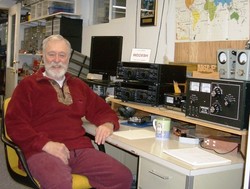
 among those who have arrived in Nepal to help facilitate communication. Word earlier this week via Amateur Radio Society of India President Gopal Madhavan, VU2GMN, was that visiting hams would not be permitted to operate in Nepal, unless they were part of a government team. On the other hand, getting needed Amateur Radio equipment into Nepal remains problematic.
among those who have arrived in Nepal to help facilitate communication. Word earlier this week via Amateur Radio Society of India President Gopal Madhavan, VU2GMN, was that visiting hams would not be permitted to operate in Nepal, unless they were part of a government team. On the other hand, getting needed Amateur Radio equipment into Nepal remains problematic.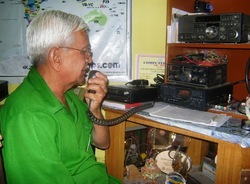
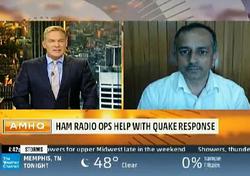 of The Weather Channel. In the interview segment, Kharel talked about ham radio's role in the earthquake recovery effort now under way in Nepal. More than 5000 people have been confirmed dead as a result of the earthquake and subsequent aftershocks, and many others remain missing.
of The Weather Channel. In the interview segment, Kharel talked about ham radio's role in the earthquake recovery effort now under way in Nepal. More than 5000 people have been confirmed dead as a result of the earthquake and subsequent aftershocks, and many others remain missing.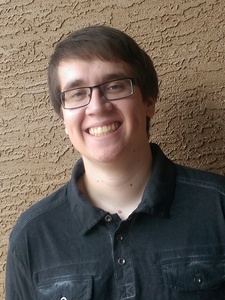
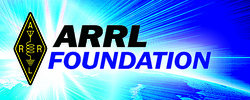 arned three college credits through the Rochester Institute of Technology. The senior project, accomplished as a team, must address a real-world problem. Jacob came up with this year's -- a 30-foot portable "stealth" telescoping mast -- undertaken at his grandfather's suggestion; Jacob lives in an antenna-restricted community.
arned three college credits through the Rochester Institute of Technology. The senior project, accomplished as a team, must address a real-world problem. Jacob came up with this year's -- a 30-foot portable "stealth" telescoping mast -- undertaken at his grandfather's suggestion; Jacob lives in an antenna-restricted community.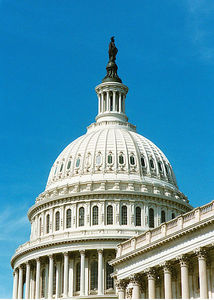 "[Y]our proposal to shutter 16 of the Commission's 24 field offices raises significant challenges and concerns," Upton said. "The Commission has represented to Congress and the American people that it will 'preserve the integrity of public safety communications infrastructure by taking action on 99 percent of complaints of interference to public safety communications within 1 day,' yet your proposal to reduce the geographic footprint of the Commission appears to ignore the impact this might have on the Commission's public interest goal." Upton said the Commission has offered little information to support its proposals. "Indeed, our concerns have only been heightened by the Commission's failure to provide all the information requested by the Committee," he wrote.
"[Y]our proposal to shutter 16 of the Commission's 24 field offices raises significant challenges and concerns," Upton said. "The Commission has represented to Congress and the American people that it will 'preserve the integrity of public safety communications infrastructure by taking action on 99 percent of complaints of interference to public safety communications within 1 day,' yet your proposal to reduce the geographic footprint of the Commission appears to ignore the impact this might have on the Commission's public interest goal." Upton said the Commission has offered little information to support its proposals. "Indeed, our concerns have only been heightened by the Commission's failure to provide all the information requested by the Committee," he wrote.
.jpg) communication for decades. Starting with the 2015 event, a Communications Committee the BAA formed last year established a "new normal" for marathon support by integrating Amateur Radio, public safety, and commercial radio providers into a single team. In step with the BAA's mandate to "review the entire communications program," the seven-member Amateur Radio management team raised the level of training to a professional caliber and developed better documentation for volunteers. Tight coordination with the BAA as both leader and "client" of the Amateur Radio communication support "led to further advancement in overall effectiveness as evidenced by a very successful outcome despite difficult weather," the Amateur Radio team said in a media release.
communication for decades. Starting with the 2015 event, a Communications Committee the BAA formed last year established a "new normal" for marathon support by integrating Amateur Radio, public safety, and commercial radio providers into a single team. In step with the BAA's mandate to "review the entire communications program," the seven-member Amateur Radio management team raised the level of training to a professional caliber and developed better documentation for volunteers. Tight coordination with the BAA as both leader and "client" of the Amateur Radio communication support "led to further advancement in overall effectiveness as evidenced by a very successful outcome despite difficult weather," the Amateur Radio team said in a media release.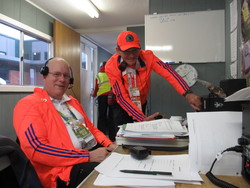
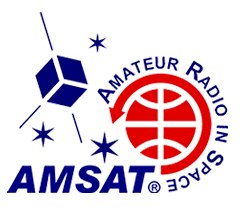 same time each day. According to AMSAT Vice President-Operations Drew Glasbrenner, KO4MA, the satellite's potential footprint would extend over the US from the Mid-Pacific to Africa. AMSAT said it has accepted the opportunity to be a "hosted payload" on a spacecraft that Millennium Space Systems (
same time each day. According to AMSAT Vice President-Operations Drew Glasbrenner, KO4MA, the satellite's potential footprint would extend over the US from the Mid-Pacific to Africa. AMSAT said it has accepted the opportunity to be a "hosted payload" on a spacecraft that Millennium Space Systems (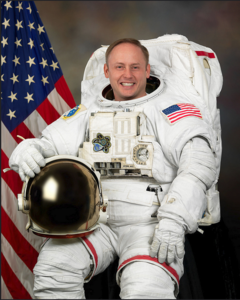
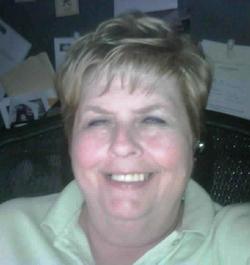
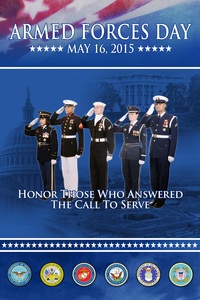 communications modes, such as MIL-STD Serial PSK. Also new this year is the inclusion of a crossband Automatic Link Establishment (ALE) test. The Army, Air Force, Navy, Marine Corps, and Coast Guard cosponsor the joint military/Amateur Radio event, which this year marks the 65th Armed Forces Day and the 90th anniversary of the Military Auxiliary Radio System (MARS). Armed Forces Day 2015 falls on May 16, but the crossband test is held on the earlier weekend to accommodate those visiting Dayton Hamvention May 15-17.
communications modes, such as MIL-STD Serial PSK. Also new this year is the inclusion of a crossband Automatic Link Establishment (ALE) test. The Army, Air Force, Navy, Marine Corps, and Coast Guard cosponsor the joint military/Amateur Radio event, which this year marks the 65th Armed Forces Day and the 90th anniversary of the Military Auxiliary Radio System (MARS). Armed Forces Day 2015 falls on May 16, but the crossband test is held on the earlier weekend to accommodate those visiting Dayton Hamvention May 15-17.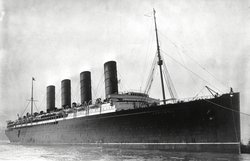
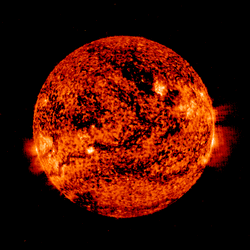 Predicted solar flux for April 30 through May 1 is 95, 100 on May 2-3, 105, and 110 on May 4-5, 115 on May 6-7, 135 on May 8-9, 130, and 125 on May 10-11, 130 on May 12-14, then 125, 130, and 125 on May 15-17, 120 on May 18-19, and 115 on May 20-23. Flux values are forecast to drop to 110 for May 27-29, then rise to 135 for June 3-5.
Predicted solar flux for April 30 through May 1 is 95, 100 on May 2-3, 105, and 110 on May 4-5, 115 on May 6-7, 135 on May 8-9, 130, and 125 on May 10-11, 130 on May 12-14, then 125, 130, and 125 on May 15-17, 120 on May 18-19, and 115 on May 20-23. Flux values are forecast to drop to 110 for May 27-29, then rise to 135 for June 3-5.







